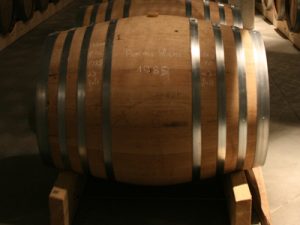 Single Cask is a term well known in the whisky industry, it certainly gives a product increased status and price but why is that? The phrase Single Cask suggests a unique glimpse into a particular set of circumstances that has given rise to a one-off personality. The whisky may be from a certain year where the distillery was using a particular mashing regime, yeast strain or set of stills. It may have been stored in a warehouse that is known to provide certain conditions. The barrel itself is unique as no two trees are identical and coopers’ techniques differ, so the flavours that develop will be only found in that cask. Every distillery has its official range of bottlings which are created to please as many people as possible, but a Single Cask captures the stage before the identity is lost in the blend. For distillery fans, this takes their experience a step further. Rarity imparts value and so a Single Cask will be highly sought after.
Single Cask is a term well known in the whisky industry, it certainly gives a product increased status and price but why is that? The phrase Single Cask suggests a unique glimpse into a particular set of circumstances that has given rise to a one-off personality. The whisky may be from a certain year where the distillery was using a particular mashing regime, yeast strain or set of stills. It may have been stored in a warehouse that is known to provide certain conditions. The barrel itself is unique as no two trees are identical and coopers’ techniques differ, so the flavours that develop will be only found in that cask. Every distillery has its official range of bottlings which are created to please as many people as possible, but a Single Cask captures the stage before the identity is lost in the blend. For distillery fans, this takes their experience a step further. Rarity imparts value and so a Single Cask will be highly sought after.
Many of these special characteristics can also be found in cognac production. Every year the very best cognacs are selected for long-term ageing, rather than joining the thousands of others destined to be blended. The cellarmasters’ skills are paramount in bringing these chosen nectars to optimum maturity and many variations to the ageing process maybe employed. So why are these cognac vintages or age statements not designated as Single Cask? Perhaps the answer lies in the finer detail.
Amazingly, an industry-wide definition of Single Cask does not exist, but The Scottish Whisky Association (SWA) is clear on the rules that it enforces. They feel that to be classed as Single Cask, the spirit must remain in the same barrel from the moment the spirit is filled until the moment it is bottled, without any revatting or finishing. Therefore “a sherry finished single cask whisky” is not acceptable but a “single cask whisky finished in a sherry butt” is. It is accepted however, that all whiskies will move from one barrel to another in the early stages of maturation, it is what happens next that is important.
The process of moving from new to old wood in the initial stage also applies to cognac so, when a vintage is kept in the same old oak barrel throughout its maturation, it will be Single Cask. A problem arises though when there are multiple barrels of the same vintage which may be mixed for bottling. Unlike in the whisky industry, barrel numbering is not common. Cognacs can also be moved to different barrels during the ageing process. The cellarmaster seeks to guide the spirit’s maturation path by using newer and older oak barrels at different stages. This can really benefit the final quality and flavour of the cognac so is deemed to be more important than any benefits derived from being Single Cask. The rules of cognac production are strict; it may not be put into barrels that have held other types of spirit, but it may be put into previously used cognac barrels. The BNIC’s definition of Single Cask is a cognac that has always been stored in the same barrel so, the phrase could indeed be used to describe a particular barrel of cognac, but not as often as you might expect.
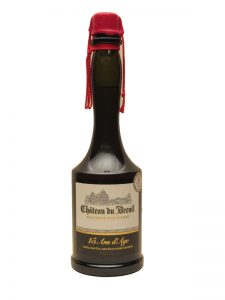 “This luxurious French spirit will bring a touch of sophistication to any home bar” says The Independent about the lesser known French brandy, Calvados. The article features 7 of the best on the market including our very popular Chateau du Breuil 15 Year Old Pays d’Auge Calvados. “Winner of a gold at the International Wine & Spirit Competition, you don’t have to just take our word for it that its good.” We have always loved this beautifully presented calvados from the top cru. “With its waxed lid and red-rope fastening, opening a bottle of this one feels like a ceremony in itself.” The presentation is matched admirably by its aroma and flavour ….. Imagine the smell as a child, coming home from school just as granny is taking a fruit cake out of the oven, this calvados is full of sultana and baked apple aromas and a rich baked apple taste. It is made from 80% fallen apples (which have a higher sugar content) and these account for its unique and delicious flavour. So, with Father’s Day around the corner, what are you waiting for?
“This luxurious French spirit will bring a touch of sophistication to any home bar” says The Independent about the lesser known French brandy, Calvados. The article features 7 of the best on the market including our very popular Chateau du Breuil 15 Year Old Pays d’Auge Calvados. “Winner of a gold at the International Wine & Spirit Competition, you don’t have to just take our word for it that its good.” We have always loved this beautifully presented calvados from the top cru. “With its waxed lid and red-rope fastening, opening a bottle of this one feels like a ceremony in itself.” The presentation is matched admirably by its aroma and flavour ….. Imagine the smell as a child, coming home from school just as granny is taking a fruit cake out of the oven, this calvados is full of sultana and baked apple aromas and a rich baked apple taste. It is made from 80% fallen apples (which have a higher sugar content) and these account for its unique and delicious flavour. So, with Father’s Day around the corner, what are you waiting for?
 Cognac is known as the King of Brandies so makes the perfect gift this Father’s Day. What better way to say “Thanks”, “I Love You” or just, “Enjoy”?
Cognac is known as the King of Brandies so makes the perfect gift this Father’s Day. What better way to say “Thanks”, “I Love You” or just, “Enjoy”?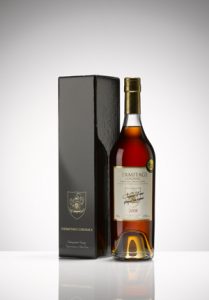 “There can be few spirits with such an illustrious pedigree and premium connotations as Cognac.” Following the last International Wine and Spirit’s Competition (IWSC) a list of the
“There can be few spirits with such an illustrious pedigree and premium connotations as Cognac.” Following the last International Wine and Spirit’s Competition (IWSC) a list of the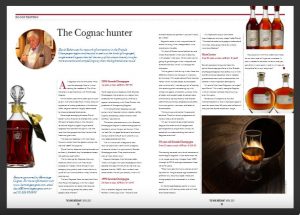 The Wine Merchant is the first trade magazine aimed solely at independent wine retailers and has been around for nearly 10 years. This month it published a double page spread featuring the founder of
The Wine Merchant is the first trade magazine aimed solely at independent wine retailers and has been around for nearly 10 years. This month it published a double page spread featuring the founder of 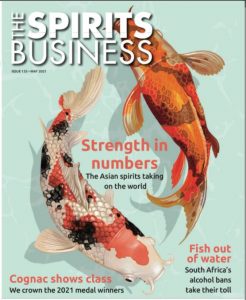 Regular readers of our Blog will know that we have often compared the astronomical prices of aged and vintage whiskies to the far more modest cognac equivalents, but there are signs that this could be about to change. Owen Bellwood, writing for The Spirits Business, has been investigating the latest trends in the cognac market and has published
Regular readers of our Blog will know that we have often compared the astronomical prices of aged and vintage whiskies to the far more modest cognac equivalents, but there are signs that this could be about to change. Owen Bellwood, writing for The Spirits Business, has been investigating the latest trends in the cognac market and has published 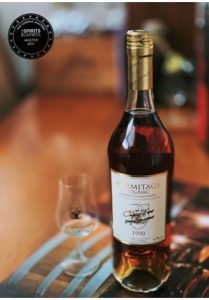 The Cognac Masters 2021 results have just been announced and we are thrilled to report that our new
The Cognac Masters 2021 results have just been announced and we are thrilled to report that our new 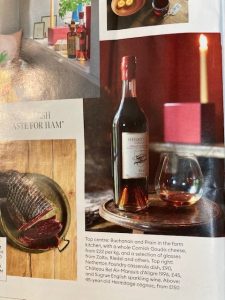
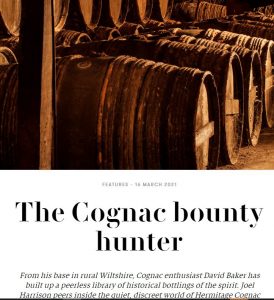
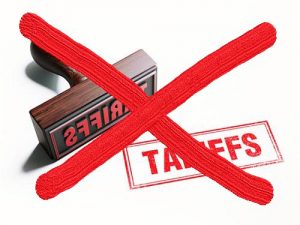 We are delighted to inform you that, the United States of America has suspended the 25% Tariff on imported
We are delighted to inform you that, the United States of America has suspended the 25% Tariff on imported 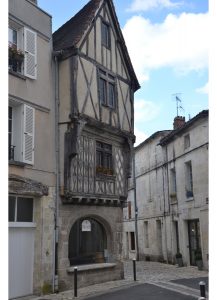 The Cognac region of The Charente and Charente Maritime has always been a popular tourist destination as it enjoys a warm, hospitable climate that borders the Atlantic Ocean. Maybe not all visitors are aware of its long, fascinating history as the producer of the King of Brandies but that is, hopefully, about to change. The Bureau National Interprofessionnel du Cognac (BNIC), Cognac’s regulatory body, has launched a project for local producers, restauranteurs, leisure professionals, coopers and hoteliers to make the appellation more accessible when travel and tourism open up again. By offering a wider range of visitor experiences, it hopes to promote Cognac as a unique tourist destination. The General Director of the BNIC said “Visiting the region is a great way to meet the women and men who daily work in the vineyards, distilleries or cellars to create this wonderful product. Their expertise is part of the French cultural heritage we are proud of.” He is hoping that this focus on tourism will attract new drinkers to the spirit,
The Cognac region of The Charente and Charente Maritime has always been a popular tourist destination as it enjoys a warm, hospitable climate that borders the Atlantic Ocean. Maybe not all visitors are aware of its long, fascinating history as the producer of the King of Brandies but that is, hopefully, about to change. The Bureau National Interprofessionnel du Cognac (BNIC), Cognac’s regulatory body, has launched a project for local producers, restauranteurs, leisure professionals, coopers and hoteliers to make the appellation more accessible when travel and tourism open up again. By offering a wider range of visitor experiences, it hopes to promote Cognac as a unique tourist destination. The General Director of the BNIC said “Visiting the region is a great way to meet the women and men who daily work in the vineyards, distilleries or cellars to create this wonderful product. Their expertise is part of the French cultural heritage we are proud of.” He is hoping that this focus on tourism will attract new drinkers to the spirit,  Single Cask is a term well known in the whisky industry, it certainly gives a product increased status and price but why is that? The phrase Single Cask suggests a unique glimpse into a particular set of circumstances that has given rise to a one-off personality. The whisky may be from a certain year where the distillery was using a particular mashing regime, yeast strain or set of stills. It may have been stored in a warehouse that is known to provide certain conditions. The barrel itself is unique as no two trees are identical and coopers’ techniques differ, so the flavours that develop will be only found in that cask. Every distillery has its official range of bottlings which are created to please as many people as possible, but a Single Cask captures the stage before the identity is lost in the blend. For distillery fans, this takes their experience a step further. Rarity imparts value and so a Single Cask will be highly sought after.
Single Cask is a term well known in the whisky industry, it certainly gives a product increased status and price but why is that? The phrase Single Cask suggests a unique glimpse into a particular set of circumstances that has given rise to a one-off personality. The whisky may be from a certain year where the distillery was using a particular mashing regime, yeast strain or set of stills. It may have been stored in a warehouse that is known to provide certain conditions. The barrel itself is unique as no two trees are identical and coopers’ techniques differ, so the flavours that develop will be only found in that cask. Every distillery has its official range of bottlings which are created to please as many people as possible, but a Single Cask captures the stage before the identity is lost in the blend. For distillery fans, this takes their experience a step further. Rarity imparts value and so a Single Cask will be highly sought after.